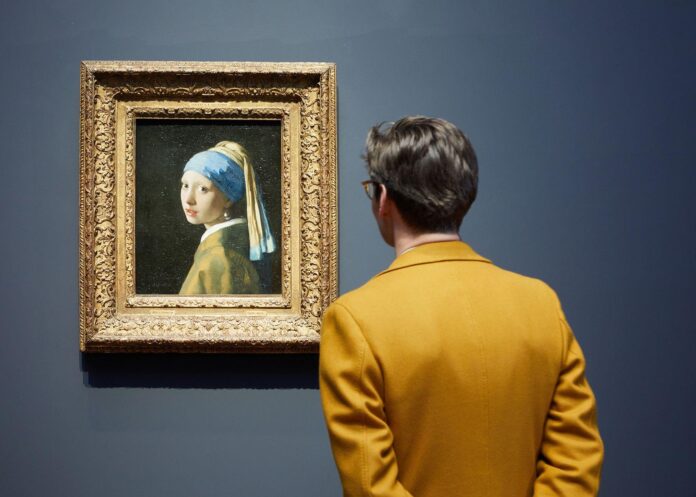Vermeer’s model for The Girl with the Pearl Earring is probably sporting a glass teardrop-shaped bauble, not a real pearl. The painting, now the artist’s most popular work, has just gone on display in the Rijksmuseum’s major retrospective Vermeer.
In the exhibition catalogue the co-curator, Pieter Roelofs, points out that a pearl of this size would have been “astronomically expensive”. In the 17th century pearls mainly came from the strait between India and what is now Sri Lanka. In 1632 a Dutch jeweller paid £500 for a large pearl bought in London for a princess (this would now be equivalent to about £100,000 today), for what was probably a much smaller one than in the Vermeer painting.

Vermeer’s The Girl with the Pearl Earring
According to Roelofs, “in Vermeer’s work we are looking at imitation glass pearls, which in his time were mainly sold by Venetian glass blowers”. There has been speculation that the model may have been Vermeer’s eldest daughter Maria, who was born in 1655 or 1656 but she would have been only around ten at the time (the Mauritshuis, which owns the painting, dates it to 1665 and the current Rijksmuseum exhibition more loosely to 1664-67).
The picture only received its present title relatively recently, after a decision by the Mauritshuis curator Quentin Buvelot for the last Vermeer retrospective, held at the National Gallery of Art in Washington, DC and the Mauritshuis in The Hague in 1995-96. Until then it was often called the “Girl with the Turban”.
Tracy Chevalier’s book The Girl with the Pearl Earring (1999) and the subsequent film (2003) made the picture even more famous. It is now undoubtedly the popular star of the Mauritshuis collection. Although the Rijksmuseum’s current retrospective runs until 4 June, The Girl with the Pearl Earring is so important to the Mauritshuis that it will be returning early, going back on display in The Hague at the beginning of April.
The painting first re-emerged in 1881, as by an anonymous artist, selling for two guilders (less than £1). It was bequeathed to the Mauritshuis in 1903.
When we asked the museum’s director Martine Gosselink about the earring, she responded: “It is neither a pearl nor glass, simply paint.” Vermeer created it with just two quickly applied brushstrokes.
• Read more about the Rijksmuseum’s Vermeer exhibition (10 February-4 June) here

























